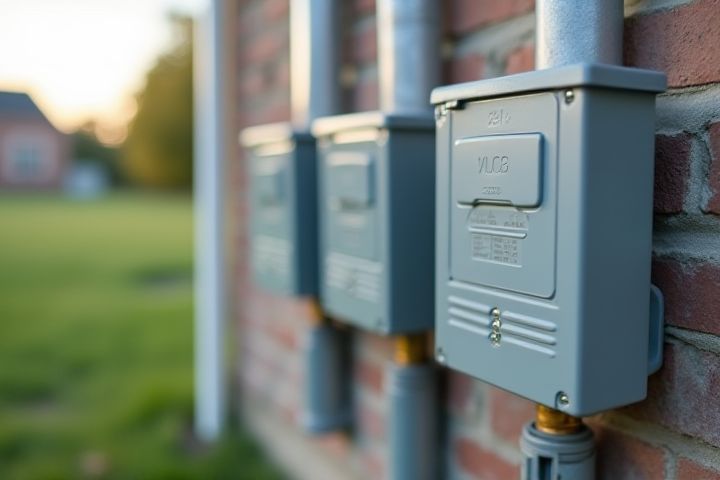
Switching house utilities is best done when you're moving into a new property or after a lease ends. Contact utility providers at least two weeks prior to your move-in date to ensure seamless service transfer. Monitor your current utility bills to identify any changes in rates or services, as this might influence your decision to switch providers. It's also wise to review customer service ratings and contract terms before committing to a new utility company. Keep a checklist of essential services, including electricity, water, gas, and internet, to aid in your transition.
When To Switch House Utilities
Lease or home purchase agreement date
Switching house utilities should coincide with your lease start date or the closing date of your home purchase agreement. For lease agreements, aim to activate utilities the day before your move-in date to ensure services are ready upon arrival. If you're buying a home, it's advisable to set the utilities to begin on your closing date, preventing any interruptions. This strategic timing guarantees that you have essential services like electricity, water, and gas operational right from the start of your occupancy.
New move-in date
To ensure a seamless transition, schedule your house utility switch for the day before your move-in date. This proactive approach avoids any interruptions in essential services like electricity, gas, and water. Contact your utility providers early, ideally a few weeks prior, to confirm the exact timelines and any potential fees associated with the change. You'll want to verify that your internet and cable services are also set up in advance to accommodate your connectivity needs from day one.
Current billing cycle end date
When planning to switch your house utilities, it's crucial to focus on the current billing cycle end date to avoid overlapping charges. Checking the specific date allows you to coordinate the transition smoothly, ensuring that new services begin immediately after old ones cease. This strategic timing minimizes service interruptions and optimizes your costs, as you won't pay for utilities you're no longer using. Remember, aligning your switch with this date helps maintain a seamless experience and ensures you're only charged for services you require.
Provider transfer policies
Understanding provider transfer policies is crucial when switching house utilities, as it can affect your service continuity and costs. Most utility companies require advance notice, typically ranging from 10 to 30 days, for a successful transfer, allowing them ample time to process your request. Check for any cancellation fees or deposit requirements from your current provider, which can range anywhere from $50 to $200, to avoid unexpected charges. Being aware of overlapping billing cycles can also save you from paying for two services simultaneously during the transition period.
Service disconnection notice period
When moving to a new residence, it is crucial to pay attention to the service disconnection notice period for your utilities. Typically, this notice period ranges from 24 to 48 hours, but can vary by provider and location. Plan to contact your utility companies at least one week in advance to ensure seamless service transition, avoiding any interruptions. Remember, timely communication can prevent billing conflicts and ensure your new home is ready with essential services.
Connection setup requirements
Before switching house utilities, confirm the connection setup requirements specified by your new service providers. You generally need to notify your current utility companies about your move at least two weeks in advance to avoid service interruptions. Ensure you have all necessary documentation ready, such as identification, proof of residency, and any prior account information, to facilitate the transition smoothly. Scheduling the installation or setup ahead of time ensures you have essential utilities like electricity, gas, and water available upon your arrival at your new home.
Initial deposit or fees
When switching house utilities, it's crucial to consider the initial deposits or fees charged by the new provider. Many utility companies require a deposit, often ranging from $50 to $200, depending on your credit history and the type of service. Thoroughly review any activation fees, which can vary between $25 to $100, as they impact your first billing cycle. By budgeting for these upfront costs, you can make a smoother transition to your new utility services.
Service availability in new area
Before moving to a new home, research the availability of essential utilities such as electricity, water, gas, internet, and waste management in your new area. Contact local utility companies to understand their installation processes, service activation timelines, and any potential service outages. It's crucial to schedule your utility transfers or new installations to ensure seamless coverage when you move in. Reviewing customer service ratings and reliability reports for these providers can help you make informed decisions that enhance your living experience.
Average set-up time
Switching house utilities is crucial during a move or when you're changing service providers. The average setup time for utilities, such as electricity, gas, and water, typically ranges from 1 to 3 weeks, depending on the service provider and location. To ensure a seamless transition, it's advisable to schedule the setup at least three weeks before your move-in date. This proactive approach minimizes disruptions to your daily life and guarantees that essential services are available when you arrive in your new home.
Competitive rates comparison
Switching house utilities can save you money, especially when competitive rates fluctuate. Analyze your current utility providers' rates and compare them with other local companies at least twice a year. Look for significant differences, such as a 10% reduction in electricity costs or a similar percentage for gas and water services. Staying informed about market trends and promotional offers can lead to annual savings of up to $500 or more for your household.
